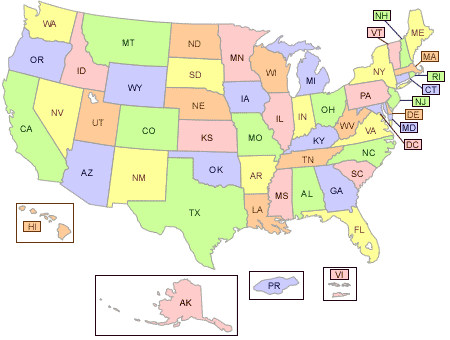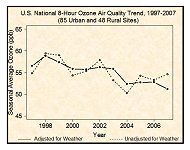Ozone
Trends in Ozone Adjusted for Weather Conditions
Variations in weather conditions play an important role in determining ozone levels. Ozone is more readily formed on warm, sunny days when the air is stagnant. Conversely, ozone production is more limited when it is cloudy, cool, rainy, and windy. EPA uses a statistical model to account for the weather-related variability of seasonal ozone concentrations to provide a more accurate assessment of the underlying trend in the precursor emissions that cause ozone. More Information
National Trends in Ozone Levels
Local Trends in Ozone Levels
National Trends in Ozone Levels
Using a nationwide network of monitoring sites, EPA has developed ambient air quality trends for ozone. Trends are shown here for the 8-hour ozone standards. Under the Clean Air Act, EPA sets and reviews national air quality standards for ozone. Air quality monitors measure concentrations of ozone throughout the country. EPA, state, tribal and local agencies use that data to ensure that ozone is at levels that protect public health and the environment. Nationally, average ozone levels declined in the 1980's, leveled off in the 1990's, and showed a notable decline after 2002. For information on ozone standards, sources, health effects, and programs to reduce ozone, please see www.epa.gov/air/ozonepollution/.
How to Interpret the Graphs
|
How to Interpret the Graphs
|
Air quality trends can vary from one area to another. Local trends are available at individual monitoring locations with an adequate record of historical data.

![[logo] US EPA](https://webarchive.library.unt.edu/eot2008/20090508141345im_/http://www.epa.gov/epafiles/images/logo_epaseal.gif)

